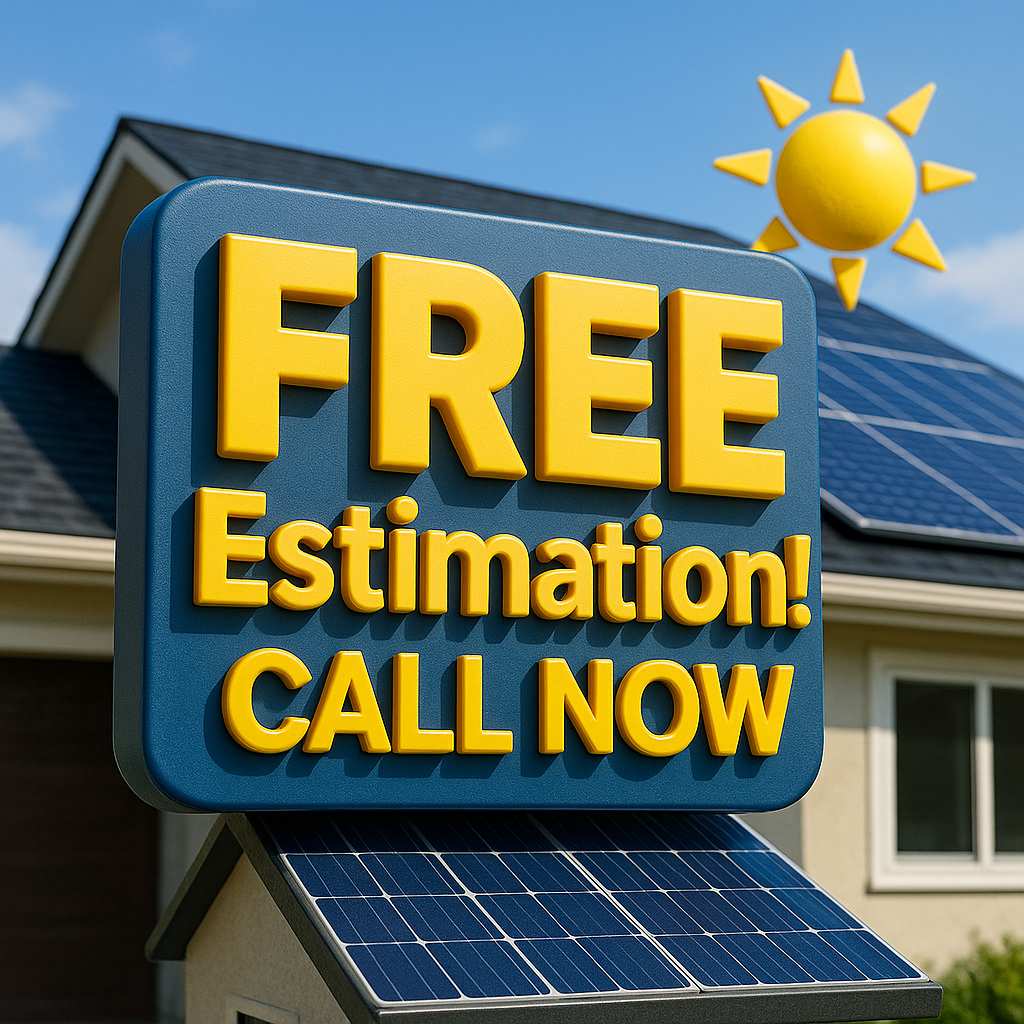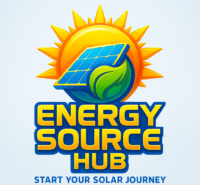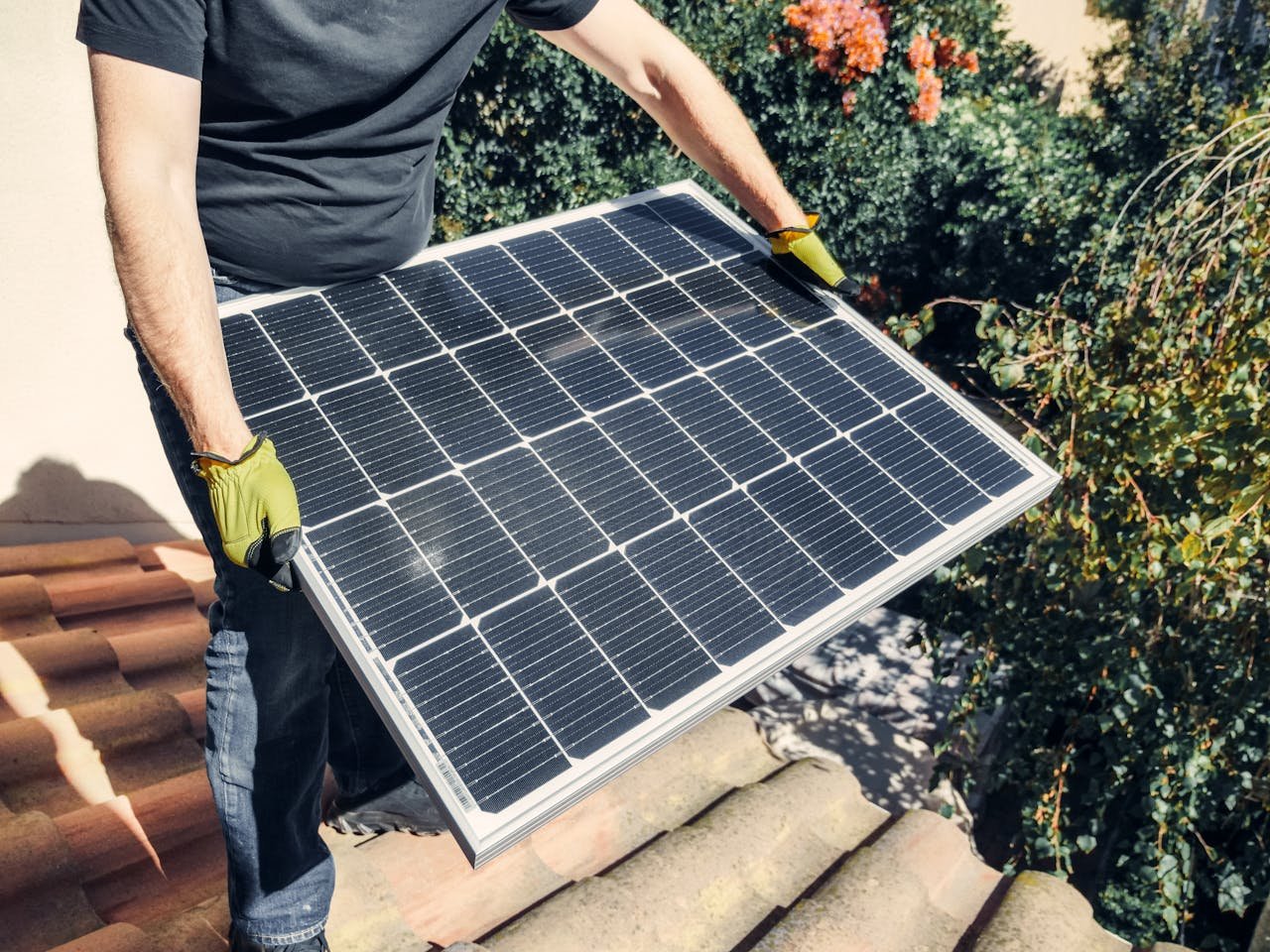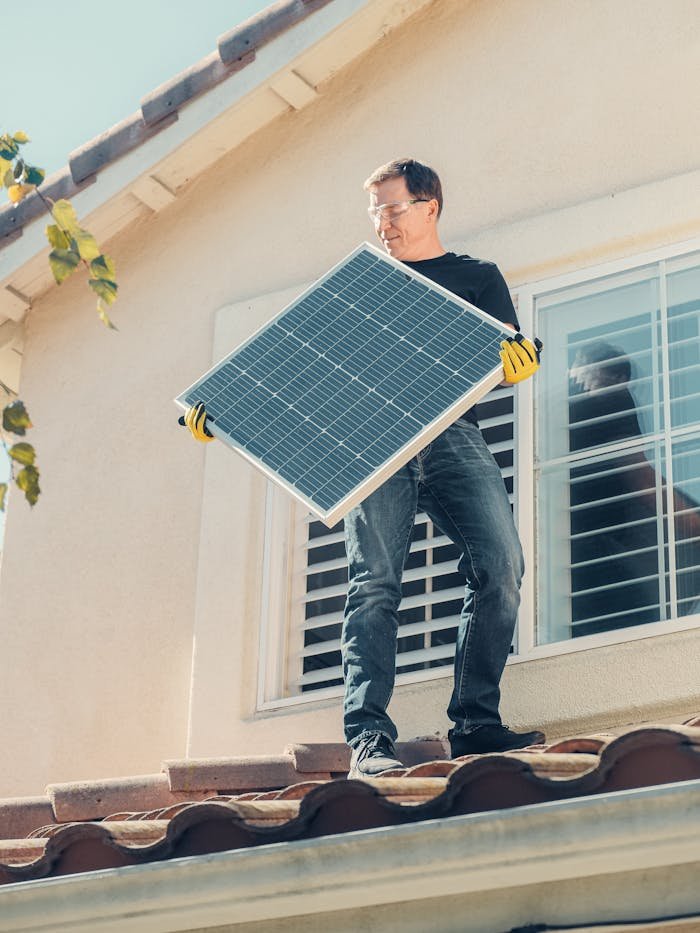Living in Chandler, AZ, comes with great benefits—abundant sunshine being a major one. If you’re a homeowner, you may have already invested in an energy system to harness it. But simply having one isn’t enough. To truly maximize its efficiency, a few smart adjustments can go a long way. Here are some practical tips and tricks to ensure you’re getting the most bang for your buck with your solar system in Chandler, AZ.
| Category | Tips |
|---|---|
| Panel Selection | Go for top-performing options like monocrystalline choices for long-term performance and reliability. |
| Installation | Adjust the angle and direction of your equipment to catch the most sunlight, and make sure nothing blocks the rays. |
| Maintenance | Regularly clean panels, check for damage, and monitor system performance. |
| Energy Usage | Use energy during peak sunlight hours, invest in energy-efficient appliances. |
| Incentives & Rebates | Take advantage of federal and state incentives, explore local rebates. |
| Battery Storage | Consider battery storage to store excess energy for use during non-sunny periods. |
| Professional Services | Hire certified installers, schedule regular professional maintenance. |
Understanding Energy Efficiency
Before we get into the details, let’s discuss what it means for your system to work efficiently. Simply put, it’s about how well it converts sunlight into usable electricity. The better the performance, the more power you generate from the same amount of sun—especially important in a sunny place like Chandler.
Pick the Right Solar Panels
Not all options are created equal. To get the best performance out of what you’ve got on your roof, it’s worth choosing wisely. Here’s a quick rundown:
Monocrystalline options are known for delivering top-tier performance and reliability, though they usually come with a higher price tag. A great pick if you’re aiming for long-term value and durability.
Polycrystalline: A bit less efficient but more budget-friendly. A solid middle-ground choice.
Thin-film options: They’re the most flexible and lightweight choice out there, though they don’t offer the highest performance. Ideal for unique projects, but not the go-to if you’re aiming for maximum output.
Think about the long-term electricity output, not just the initial cost.
Best Panel Placement
Where you place your equipment really makes a difference. Here’s what to keep in mind:
Face Toward the South:
Position your rooftop setup to face the southern direction throughout the day. This orientation captures the longest exposure during daylight hours, especially in the Northern Hemisphere. By aligning your array this way, you can significantly boost how much power is generated, as this direction receives the most consistent and direct rays from sunrise to sunset.
Tilt Angle: Adjust the Slope Based on Your Location (Around 33 Degrees)
To get the most benefit from your rooftop setup throughout the year, it’s important to angle your setup correctly. Align the slant of your structure to match your region’s latitude—roughly 33 degrees in this part of Arizona. This alignment helps ensure that your setup absorbs the most daytime rays from dawn to dusk across all seasons. A properly aligned surface means you’re making the most of what nature offers daily, whether it’s summer or winter.
Stay Clear of Shade: Even minor obstructions can drastically reduce how much power your rooftop setup can generate. Be sure the installation area remains completely exposed, with no overhanging tree branches, nearby chimneys, satellite dishes, or neighboring buildings getting in the way. A little shade during peak daylight hours can make a big difference in overall efficiency.
Regular Cleaning and Maintenance
Dust and dirt can really interfere with how well your equipment works—especially in a dry, dusty climate. Make sure to keep things clean and clear:
How Often to Clean:
Make it a habit to wipe down the surface every few months to keep things working properly—especially if you’re dealing with a lot of dust or desert winds. In areas with frequent dry weather or nearby construction, you might need to rinse things off even more often to maintain strong functionality.
How to Clean Your Setup:
Grab a soft-bristled brush and a gentle stream of water from your garden hose to clear off dust and debris. Stay away from strong cleaning agents or high-pressure tools, as they could damage the surface or connections.
Annual Expert Inspection:
Bring in a certified technician once a year to do a thorough check and deep cleaning of your setup. They’ll look for wear and tear, loose connections, dirt buildup, or signs of corrosion. Spotting small problems early helps prevent bigger, more expensive issues down the line—and keeps everything working as it should for the long haul.
Keep an Eye on How Everything’s Running
Stay on top of how your equipment is performing.
Track Your Daily and Monthly Results:
Keep a close eye on how much power your setup is delivering each day and throughout the month. If you notice a sudden dip in production that doesn’t match up with changes in the weather or season, it could signal a technical issue that needs attention.
Weather Shifts: Seeing a minor dip when the skies are overcast is totally expected. However, if everything looks clear outside and you notice a significant decrease in how much your setup is producing, that’s a sign something might be off.
Call in the Experts: Noticing a steady decline in how well your setup is working? That’s your sign to bring in a trained technician. They can pinpoint issues you might miss—like wiring faults, inverter problems, or even shading changes over time. Regular inspections from someone who knows the ins and outs of solar technology can save you money in the long run and keep everything operating at its best.
Consider Battery Storage Investment
Store extra power for use at night or on cloudy days.
- Energy Independence: Less reliance on the grid, especially during peak hours.
- Backup Power: Keeps essentials running during outages.
- Maximize Savings: Use the power you store to reduce your monthly bills.
Benefit from Available Incentives
Take advantage of available incentives to increase performance and get more value from your investment.
Federal Tax Credit: Helps Lower Installation Expenses
Thanks to government-backed financial incentives, homeowners can significantly reduce the upfront price of adding a renewable setup to their property. This credit allows you to deduct a percentage of your total installation bill from your federal taxes, making it more affordable to switch to a sustainable power source. Whether you’re upgrading your current setup or starting fresh, this tax benefit can make a big difference in your overall budget.
State Financial Perks: Unlock Extra Savings on Your Investment
In addition to what the federal government offers, the state provides its own set of money-saving benefits that can make your upgrade even more affordable. These perks might include extra tax breaks at the state level, exemptions on added property value from your installation, and local utility programs that reward homeowners for making environmentally conscious choices. When you tap into these offerings, you’re not just reducing the upfront cost—you’re setting yourself up for long-term savings while doing something good for the environment. Be sure to check what’s currently available in your zip code and talk to a licensed installer who can guide you through the paperwork.
Net Metering: Send Your Extra Power Back and Cut Down Your Bill
If your setup creates more power than your home needs at the moment, that extra supply doesn’t have to go to waste. With net metering, you can feed that surplus directly into the public grid. In return, your utility provider gives you credits. Those credits show up on your bill and help lower your monthly costs—especially helpful during times when you’re drawing more from the grid than you’re producing. It’s a smart way to make your home setup work double time for your wallet.
Upgrade Your Inverter
The inverter transforms direct current into usable electricity for your home. Choosing a high-performing model can noticeably enhance overall output.
Traditional string converters manage the entire setup as one unit, meaning if one part faces issues—like shading—the whole setup can slow down. On the other hand, micro-style converters are installed on each individual unit, allowing them to operate independently. This setup is especially useful in areas where certain sections may be shaded throughout the day, as it prevents one lagging unit from affecting the entire array’s performance.
Power Backup Compatibility:
Before finalizing your inverter choice, double-check that it works smoothly with modern battery banks. Not every model supports storage units, and choosing the wrong one could limit your ability to store power for later use. A compatible inverter ensures that the energy gathered during the day can be saved effectively for evening or cloudy-day use. This kind of setup offers more independence from the grid and adds resilience during outages. Always review product specifications or consult with a professional installer to confirm your inverter and battery setup will work together without issues.
Timing Your Use
Make the most of what your home generates by planning your daily activities around the brightest parts of the day. For example, try running high-powered appliances like the dishwasher, laundry machines, or air conditioning during midday hours. That’s typically when your setup is working at its strongest. Aligning usage with peak daylight not only boosts efficiency but can also lead to noticeable savings on your monthly bills.
Run Major Home Devices When It’s Bright Outside
If you’re looking to stretch your solar setup’s benefits, consider timing when you use high-demand household items. Using your dishwasher, laundry machine, or cooling unit during the brightest part of the day helps take advantage of the natural power being generated right then. This approach reduces the need to draw power from the grid and keeps your utility bills lower. It’s a simple shift in routine that can lead to long-term savings and better use of your home’s power source.
Smart Thermostats: Make the most of the power your setup generates by automating when your heating and cooling systems turn on. These devices learn your routines and adjust indoor temperatures efficiently, helping reduce monthly utility costs while keeping your home comfortable.
Electric Vehicles:
Charge your car during the brightest part of the day when your rooftop setup is at its peak, generating the most usable power. This way, you’re fueling up your vehicle using what your setup naturally produces, all while trimming down those utility bills.
Insulate and Weatherize Your Home
Make your home more efficient to reduce overall consumption:
Insulation:
A well-insulated home stays cozy during winter and cooler in the summer by minimizing the exchange of indoor and outdoor air. By creating a strong barrier against temperature shifts, insulation reduces the need to constantly adjust heating or cooling devices. This not only creates a more consistent indoor environment but also helps lower monthly utility bills. Whether it’s in the attic, walls, or around windows and doors, quality insulation plays a key role in maintaining comfort year-round.
Close Up Those Drafty Spots:
Take a good look around your home—especially near windows, doors, and air vents. Tiny openings may seem harmless, but they let outdoor air creep in and indoor comfort sneak out. By using weather stripping, caulk, or foam sealant, you can block those leaks, making your place more comfortable year-round and keeping your cooling or heating from working overtime. It’s a small fix that adds up to big savings over time.
Window Efficiency Boost: Consider installing modern, high-grade windows that are built to minimize indoor temperature swings. These upgraded designs reduce the strain on your heating and cooling setup by limiting how much outside air and heat enter your space—helping you save money over time.

Educate Yourself and Stay Updated
Keep yourself in the loop with the newest developments and smarter ways to improve how your setup functions. From fresh advancements in tech to clever techniques shared by seasoned pros, staying informed helps you make the most of your setup. Read industry blogs, follow expert advice, join homeowner forums, and don’t hesitate to reach out to trusted installers for the latest updates that could benefit your home.
Dive Into Learning: There’s a wide range of trustworthy websites, blogs, and expert forums out there that break things down in simple terms. Whether you’re curious about how rooftop setups function, want to compare different models, or are keeping up with local installation trends, these resources make it easy to stay informed and make smart choices for your home.
Get Involved with Like-Minded Folks:
Connect with others who’ve also taken steps to power their homes in smarter ways. Whether you’re chatting in a neighborhood group or joining online discussions, these spaces are full of real-world advice. You’ll pick up tricks from people who’ve already tackled common issues, discover new ideas to boost your setup, and stay in the loop about the latest updates in home technology. It’s also a great place to ask questions, share your own experiences, and avoid costly mistakes others have already dealt with.
Talk to the Pros: If anything seems off or you’re unsure about how your setup is working, don’t hesitate to reach out to a certified technician or installer. They can walk you through the specifics, troubleshoot any issues, and make sure everything is working as efficiently as possible.
Conclusion
Getting the most out of your home’s sunshine tech comes down to smart decisions—like choosing quality equipment, staying on top of upkeep, and timing when you run major appliances. These simple habits can keep things running smoothly, cut your monthly bills, and support a greener lifestyle. Whether you’re just beginning your journey or aiming to step things up, there’s always a way to make better use of all that Arizona sunshine.



